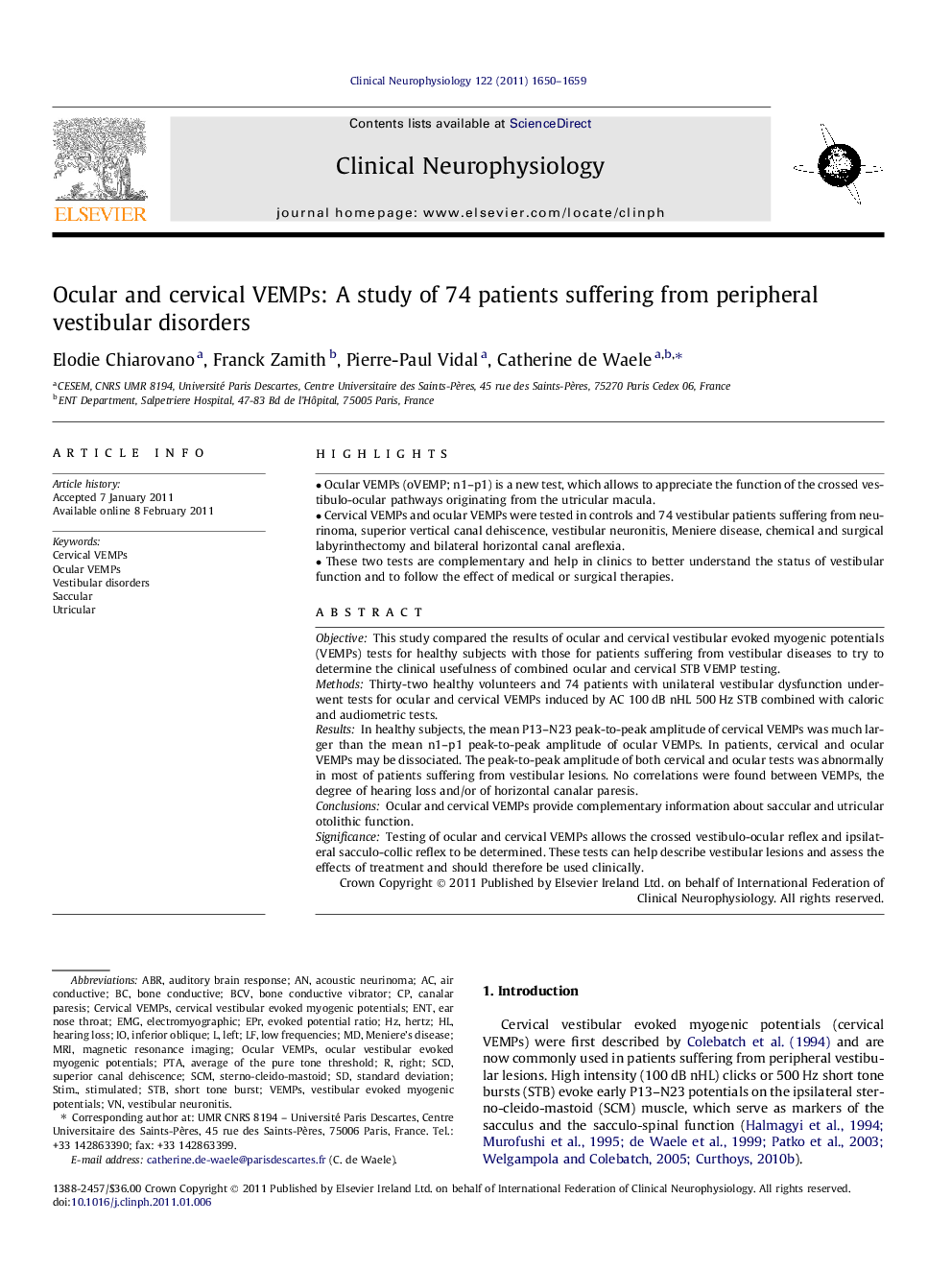| Article ID | Journal | Published Year | Pages | File Type |
|---|---|---|---|---|
| 3044032 | Clinical Neurophysiology | 2011 | 10 Pages |
ObjectiveThis study compared the results of ocular and cervical vestibular evoked myogenic potentials (VEMPs) tests for healthy subjects with those for patients suffering from vestibular diseases to try to determine the clinical usefulness of combined ocular and cervical STB VEMP testing.MethodsThirty-two healthy volunteers and 74 patients with unilateral vestibular dysfunction underwent tests for ocular and cervical VEMPs induced by AC 100 dB nHL 500 Hz STB combined with caloric and audiometric tests.ResultsIn healthy subjects, the mean P13–N23 peak-to-peak amplitude of cervical VEMPs was much larger than the mean n1–p1 peak-to-peak amplitude of ocular VEMPs. In patients, cervical and ocular VEMPs may be dissociated. The peak-to-peak amplitude of both cervical and ocular tests was abnormally in most of patients suffering from vestibular lesions. No correlations were found between VEMPs, the degree of hearing loss and/or of horizontal canalar paresis.ConclusionsOcular and cervical VEMPs provide complementary information about saccular and utricular otolithic function.SignificanceTesting of ocular and cervical VEMPs allows the crossed vestibulo-ocular reflex and ipsilateral sacculo-collic reflex to be determined. These tests can help describe vestibular lesions and assess the effects of treatment and should therefore be used clinically.
► Ocular VEMPs (oVEMP; n1–p1) is a new test, which allows to appreciate the function of the crossed vestibulo-ocular pathways originating from the utricular macula. ► Cervical VEMPs and ocular VEMPs were tested in controls and 74 vestibular patients suffering from neurinoma, superior vertical canal dehiscence, vestibular neuronitis, Meniere disease, chemical and surgical labyrinthectomy and bilateral horizontal canal areflexia. ► These two tests are complementary and help in clinics to better understand the status of vestibular function and to follow the effect of medical or surgical therapies.
